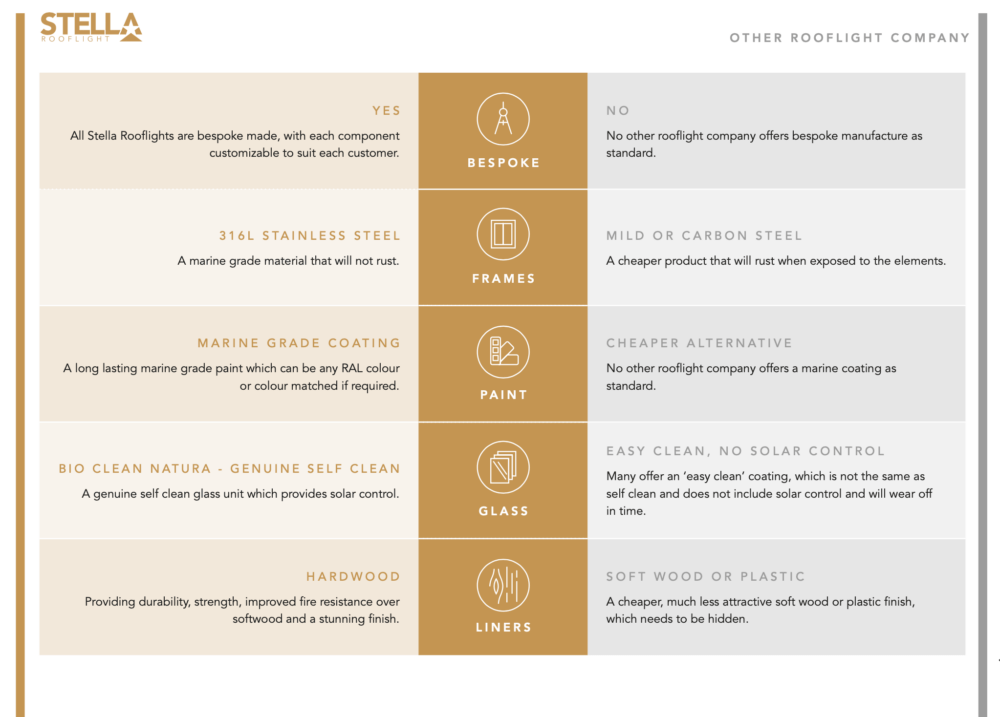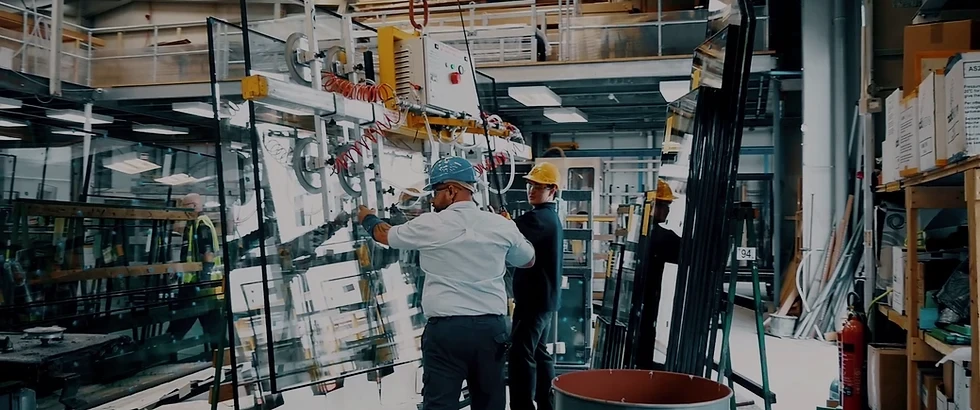Glazing
Simply amazing glazing
When it comes to rooflights, the glass you choose can make a huge difference to the performance of your product.
Glass will typically make up 70% of your rooflight, and it's at the heart of controlling the flow of natural light, the level of safety and security, and of heat retention. It can even help protect furniture against fading.
Stella and Planitherm glass
Whether you’re looking for warmth, a peaceful night’s sleep or to enjoy a sun-filled room without overheating, Planitherm units offer the ultimate high-performance glass for every application.
It's the UK's leading energy-efficient glass and can be incorporated into any style of rooflight.
Stella Rooflights Glazing - Where Innovation Meets Clarity
What is Self-Cleaning Glass?
Self-cleaning glass comes in two variants: hydrophobic and hydrophilic. Both types use water to effortlessly clean the glazing, but hydrophilic coatings, featuring titania, go the extra mile by chemically breaking down absorbed dirt in sunlight.
Hydrophilic Self-Clean Glass: Known for the “lotus effect,” this glass boasts high water repellence, mimicking the lotus flower’s leaves. The titanium dioxide coating reacts with UV light, generating electrons that break down organic dirt into minuscule pieces. Rainwater then
easily washes away the debris, leaving your rooflights pristine and streak-free.
Photocatalytic Self-Clean Glass: This glass operates similarly to hydrophilic glass but includes an additional titanium dioxide coating. Utilising sunlight through a process called photocatalytic decomposition, it breaks down dirt on the glazing. When it rains, the water washes away any loosened dirt, leaving no streaks behind. The coating ensures even water runoff, quick drying, and a long lifespan.
Stella Rooflight and Saint Gobain Glass
Benefits of Self-Cleaning Glass
Long Lasting Clarity
Cost Savings
Uninterrupted Views
Environmentally Friendly
Quick and Easy Maintenance
Less dirt and grime adhere to the glass, simplifying cleaning.
Perfect for Hard to Reach Areas
Watch Our Video to Learn More about Stella Rooflights and Self -Cleaning Glazing

A wide range of rooflight glazing options for every application
There are a number of factors that you should consider when designing your rooflights and probably the most important is to specify the right glass for the application in which it is being used.
This means that the type and thickness of the rooflight glazing also needs careful consideration. For example, the larger the glass area then the thicker the units will be.
Toughened or laminated glass?
Likewise, if you are using large areas of glass at lower levels you should consider what is going to be underneath and undertake a risk assessment to decide whether having a laminated inner pane is a better option.
If laminated glass is viewed as even safer than toughened, you may wonder why we wouldn’t include that in our units as standard. Choosing your rooflight glass unit specification is as important as the frame itself and needs careful consideration.
Not all glass options are suitable for all applications and we would always advise that you discuss your project with us. We have written a helpful article on the practicalities involved is specifying large rooflights.


